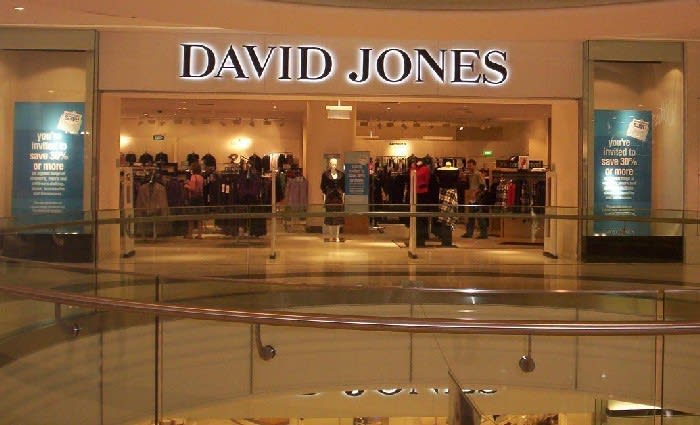Welcome to blandsville? Myer and David Jones embrace grocery-style streamlining
GUEST OBSERVER
Australian department store retailers David Jones and Myer have both recently moved to rationalise the number of clothing brands they offer in their stores.
This strategy brings two common retail sayings to mind. First “to win in retail, you can’t be everything to everyone”, and second, “if you’re not growing, you’re going backwards”.
In retail, you can’t be everything to everyone
“It is high time we retailers realised that we cannot be all things to all people. When we try to do that, we end up with no particular appeal for anybody.”– Martineau, Pierre “The personality of the retail store” (1958).
These sentiments have never been more pertinent than in today’s retail environment where competition is fierce to secure market share and squeeze what little growth is left out of mature fashion apparel markets.
Maturity is forcing retailers to take one of two routes to compete for share of customers’ wallets: competing on price, or competing on superior benefits that are highly attractive to specific customers. While price is still an important part of the retail mix for upmarket department stores such as DJs, for the most part these retailers have left this price war to the discount end of the market – Kmart and Big W. Taking the second route to compete – provision of unique benefit to customers – requires retailers to make choices after defining their target customer.
Taking a walk through either a DJs or Myer store just five years ago would have given one the sense that these were “upmarket” retailers with a premium image and expensive brands to boot. Defining exactly who they were targeting, however, would have proved more difficult. With store floors cluttered with an eclectic range of brands and own label clothing, it would seem that they were targeting anyone who could shop in their stores and were prepared to pay the prices.
The entrance of savvy global retailers into the Australian apparel market, such as H&M and Woolworths SA, combined with shifting expectations of customers has changed the clothing retailing game. Searching for growth in a crowded market is forcing retailers like DJs and Myer to carve up the market into different consumer segments, and target a few specific segments with their offers. As Daniel Bracken, Myer’s chief merchandising and marketing Officer, says:
“We have a very clear focus on who the most valuable customer is to our business and that’s what is driving us to put these new brands in our business.”
Identifying and targeting attractive customer segments in the market requires a deep understanding of who they are, where and why they shop; and strategic shifts in the retail offer.
The recent reductions in the ranges offered at Myer and DJs – around 100 and 180 brands from their respective brand portfolios, shows they are in the midst of significant transformation. This means shifting from a store for everyone (my store, Myer) to a focus on specific customer segments. Undoubtedly these retail transformations are focused on growth.
In retail, if you’re not growing, you’re going backwards
A key metric that clothing retailers live and die by is gross margin return on investment – GMROI. That is, how many gross margin dollars are earned on every dollar of inventory investment.
There are two ways to grow GMROI in retail: (1) increase sales to the customer; and (2) decrease internal/inventory costs. In reducing their ranges and moving to increase the floor space dedicated to targeted branded and own label ranges, retailers DJs and Myer are seeking to improve ROI from both directions.
If implemented well, these range reductions will also benefit shoppers. For instance, fewer brands on the shop floor reduces clutter and increases the visibility of the brands that are ranged, making it easier to shop. Fewer brands on the shop floor should also lead to reduced out-of-stocks – which is a top source of dissatisfaction for customers and a key reason to take their wallet to another retailer, permanently.
So what does this mean for small, local apparel brands? Undoubtedly the range rationalisations in DJs and Myer will impact wholesalers and small local labels that relied on these retailers stock and sell their offers. Increasingly, however, we are seeing branded manufacturers bypassing the big-box retailers and forging their own retail channels direct to their target customer through online stores, funky pop-ups and concept stores – such as the Bendigo-based family owned boutique furniture manufacturer Jimmy Possum. Unlike the grocery scenario in Australia, customers have power in this market and are prepared to shop in alternative channels for their clothing.
The vanilla-fication of clothing retail?
Is the brand rationalisation being played out on the store floors of Myer and DJs just the start of the “vanilla-fication” of clothing retail in the Australian market? Are we seeing a homogenisation and shift towards “blandsville” in the name of corporate profit growth and margin? Not likely.
What is more likely is that we are going to see smarter, tighter, and more targeted ranges of own label and supplier brands that reinforce the image of the retailer and resonate with their ideal customer.
Rather than banking the profit gains from these tighter ranges, expect to see DJs and Myer reinvesting these gains into tailoring the store environment to the target customer and delivering genuine, seamless omni-channel experiences across all retail channels – online, mobile, in store – to build a competitive edge.
The range reductions on the shop floor in DJs and Myer may herald a shakeup in the local market to a more exciting and innovative space, with local brands moving out from the shadows of the big-box department stores and establishing their own innovative routes to the customer – such as digital and pop-up, using their size and agility to carve out their own space.
ecturer in marketing at University of Melbourne and author for The Conversation. She can be contacted here.
